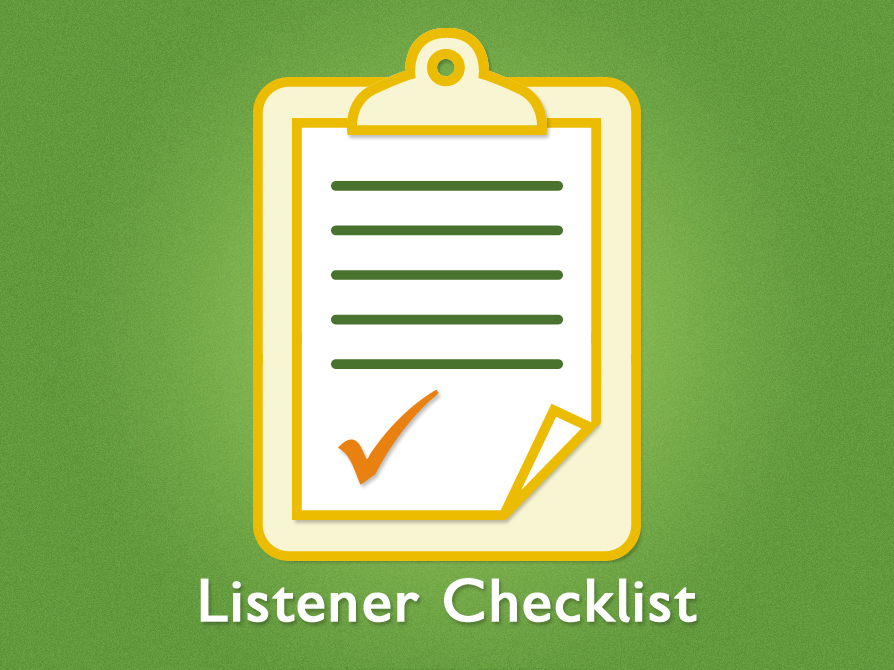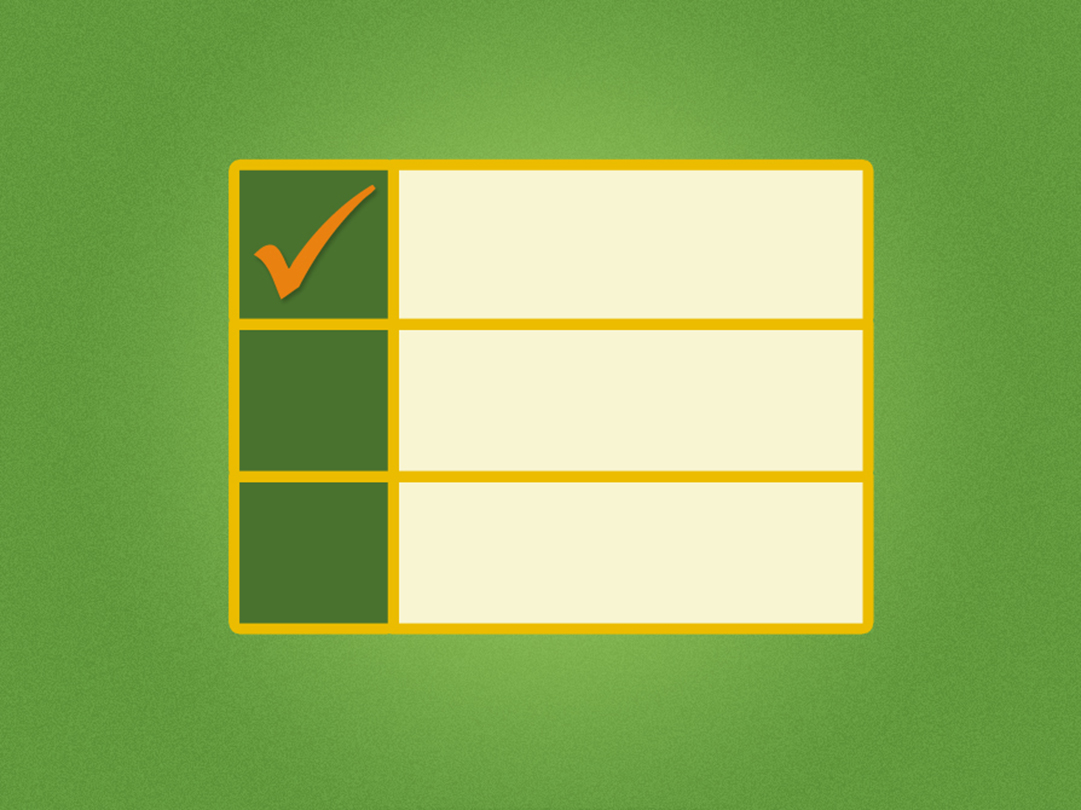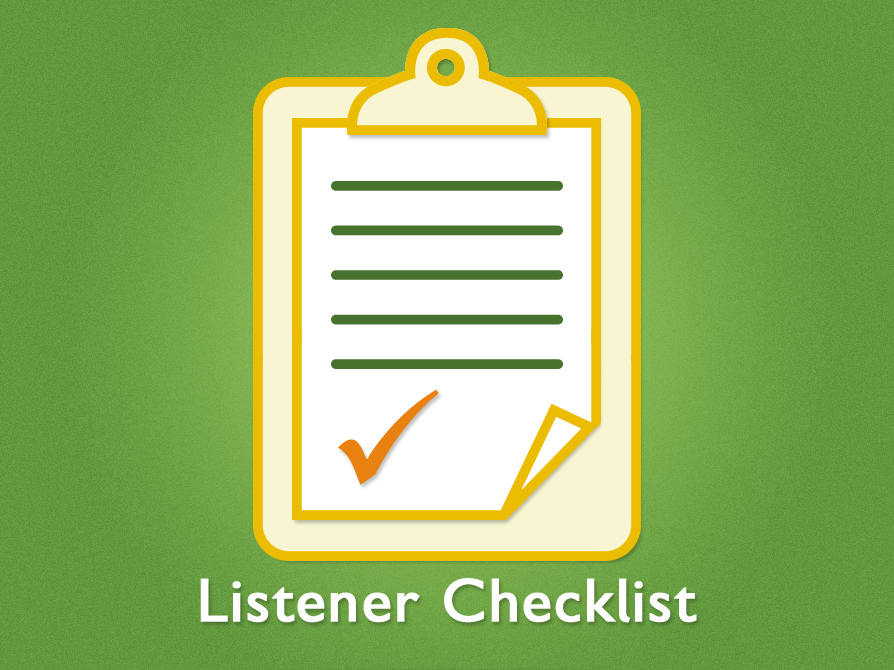- Author:
- Chris Adcock
- Subject:
- Mathematics
- Material Type:
- Lesson Plan
- Level:
- Middle School
- Grade:
- 7
- Provider:
- Pearson
- Tags:
- License:
- Creative Commons Attribution Non-Commercial
- Language:
- English
- Media Formats:
- Text/HTML
Listener Checklist
Project Rubric: Samples and Probability
Providing Good Feedback
Providing Good Feedback
Group Project Presentation

Overview
Lesson Overview
Groups will begin presentations for their unit project. Students will provide constructive feedback on others' presentations.
Key Concepts
- Students should demonstrate their understanding of the unit concepts.
Goals and Learning Objectives
- Present projects and demonstrate an understanding of the unit concepts.
- Provide feedback for others' presentations.
- Clarify any misconceptions or areas of difficulty.
- Review the concepts from the unit.
Give Feedback and Be a Good Listener
Lesson Guide
Use the presentations as a vehicle to clarify thinking about statistics and probability. Explain to students that they will be presenting their projects for the next two days, as well as listening and taking notes to provide feedback and evaluate the other presentations.
Mathematics
As students look at the Feedback Form and the Listener Checklist, ask them to think about what to look for to decide if the presentation is accurate and meets the rubric criteria:
- Do the presenters speak appropriately? Are the visuals easy to see and understand?
- Do the measures appear to be accurate based on the data set?
- Do the graphs look accurate or seem reasonable based on the data set and the measures?
- Is the presentation organized and easy to follow?
- Was the question addressed appropriately challenging?
- Does the conclusion seem reasonable, based on the evidence?
- Is there any project-specific criteria?
ELL: As with other oral instructions, ensure that the pace of your speech is appropriate for ELLs. Pause frequently to allow students to pose questions. Alternatively, ask questions, as your explanation unfolds, to monitor understanding.
SWD: Students with disabilities may have a more challenging time identifying areas of improvement to target in the projects they are observing. Model explicitly for students (using an example project or student sample) how to review a project using the rubric in order to assess if the presenters meets the rubric criteria.
Opening
Give Feedback and Be a Good Listener
Today students will present their projects.
- You will fill out a Feedback Form for each presentation. Look at the Feedback Form. Practice completing and saving it—just once. Note that the project rubric is posted in the classroom for your reference.
- Look at the Listener Checklist. Your teacher will rate the class on these listening skills during the presentations, so try to use these skills as you listen to the presentations.
HANDOUT: Listener Checklist
HANDOUT: Providing Good Feedback
Math Mission
Lesson Guide
Discuss the Math Mission. Students will present their projects and evaluate other students' projects.
Opening
Present your project and evaluate other students’ projects.
Present Projects
Lesson Guide
While groups are presenting, the rest of the students will take notes and use the rubric to evaluate the presentations. There will be two days of presentations; organize them so you can highlight the areas that need clarifying.
ELL: Post audience member expectations in a prominent location; clearly define their responsibilities as an active audience member.
ELL: When critiquing students whose proficiency in English is low, focus on what the student is trying to convey and not the grammar mistakes. If you are not sure you understand, ask the student to repeat in different ways.
Mathematics
As students present, look for examples that will allow you to bring out misconceptions or difficulties that students have:
- Do students have difficulty using ratios? Which projects are good examples and which demonstrate the misconceptions?
- Do students make good use of graphs to show their results clearly?
- Do students understand that a larger number of trials will give an experimental probability closer to the theoretical probability?
Mathematical Practices
Mathematical Practice 3: Construct viable arguments and critique the reasoning of others.
Group presentations should include sound reasoning that is clearly communicated. Students listening to presentations should listen critically to provide constructive feedback.
Performance Task
Present Projects
- Complete the Feedback Form after each presentation.
- The presenters will have a chance to read your feedback; therefore, you should do your best to make your comments honest, considerate, and specific.
Project Rubric (For Teacher Use)
Listener Checklist (For Teacher Use)
HANDOUT: Project Rubric: Samples and Probability
HANDOUT: Listener Checklist
Reflect on Your Work
Lesson Guide
Have each student write a brief reflection before the end of class. Review the reflections to find out what their favorite presentation was and why.
SWD: Refer students to their partner feedback form as they begin writing their reflections. Give students time to discuss their ideas with a partner if they choose.
Work Time
Reflect on Your Work
Write a reflection about today’s project presentations. Use the sentence starter below if you find it to be helpful.
My favorite presentation was _______ because…


